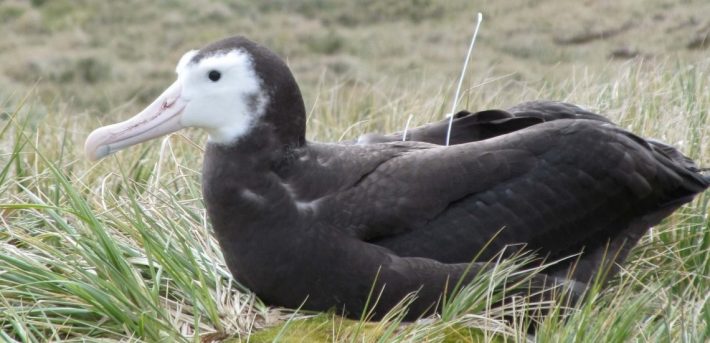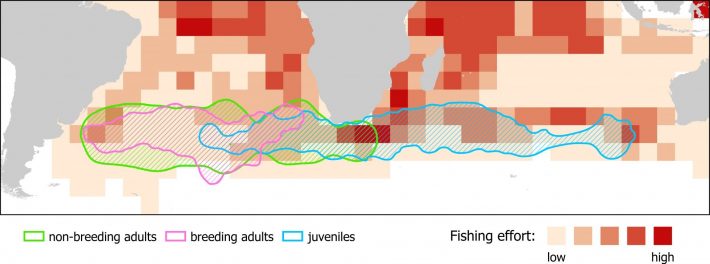New study: are teen seabirds safe?
BirdLife International press release.
Seabirds have an exploratory adolescent phase, often looking for food in ocean areas quite different to breeding adults. A new collaborative BirdLife study warns that current seabird protection measures should not neglect such crucial stages of seabird development. The findings are published in Journal of Applied Ecology.

Whether it’s to get space from their parents, ‘find themselves’ or see more of the world before they settle down, human teenagers and young adults tend to have an exploratory phase. The same could be said for young seabirds, which have been tracked for long periods wandering great distances at sea. And just as this crucial stage in a person’s psychological development can sometimes take them down dangerous alleys, the paths taken by young and non-breeding albatrosses and petrels may well be leading them towards dangerous interactions with fishing vessels. To counter this, a recent study led by BirdLife scientists provides a new and improved method for identifying seabird hotspots for at-sea conservation measures.
Lightweight tracking devices attached to the backs or tails of seabirds, or to a ring on their legs, have given us a completely new insight into their movements and lives – insight that is crucial to, for example, set measures for long-line fisheries in certain important zones to prevent seabird deaths. Yet, despite major recent advances in tracking technology, studying at-sea movements of juvenile, immature, and non-breeding adult seabirds remains particularly challenging, because they can be gone for months or years, returning to colonies only for short periods – making it difficult to retrieve devices and download data.
“Often, approaches to identify seabird hotspots at sea are based on breeding adult distributions”, says lead author Ana Carneiro, Seabird Science Officer at BirdLife. “As a result, evaluation of risk is likely to be biased or an underestimate.” It’s like having family travel insurance that only covers parents – and only when they’re trying for a baby.
Tackling this oversight, Carneiro and international colleagues, including from BirdLife Partners in the UK and the Falklands, found a way of integrating seabird tracking data with other data on population state and the timings of breeding cycles (demography and phenology). Now they have the tools to build well-rounded maps of where seabirds are distributed over an entire year, including where ‘teens’ and ‘gap year’ adults travel. When they overlapped their results with fishing hotspots, the on-screen maps revealed the importance of their work.

Focusing on 22 seabird species of global conservation concern, their data demonstrated that omitting these life stages leads to distribution maps that underestimate exposure to longline fishing effort by a worrying 18-42%. Young inexperienced birds are also more likely to become victims of bycatch than adults, so the impact could be huge, especially for long-lived albatrosses that wander for many years before sexual maturity and take non-breeding ‘gap years’ between raising a single chick.
This work now provides a framework for identifying seabird hotspots that considers these vulnerable life stages, and will help conservationists and policy makers improve regulations and enforce fishery-observer coverage to protect seabirds. BirdLife’s Albatross Task Force has shown that when fisheries adopt simple measures to prevent bycatch, seabird deaths are reduced by at least 80%.
Smells like team spirit
This work was largely reliant on the groundwork made with BirdLife’s Seabird Tracking Database. “This study shows the power of collaboration”, says Lizzie Pearmain, Marine Technical Officer, BirdLife. “It was reliant on thousands of tracks from collaborators around the globe. We’re publishing all our code and methods, and would love to see our framework being applied to other marine megafauna and different threats.”
Read the article for free (for a limited time) here:
, , , et al. A framework for mapping the distribution of seabirds by integrating tracking, demography and phenology. J Appl Ecol. 2020; 00: 1– 12. https://doi.org/10.1111/1365-2664.13568
Like what we stand for?
Support our mission and help develop the next generation of ecologists by donating to the British Ecological Society.